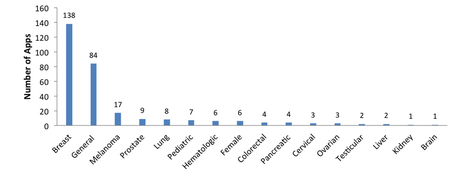Since the beginning of the 21st century, mobile phones have become nearly ubiquitous. At the end of 2011, there were an estimated 6 billion mobile subscriptions, accounting for approximately 87% of the global population
Rapid technological convergence has led to the emergence of smartphones—feature-rich phones that combine the voice and text messaging functions of basic phones with powerful computing technology that can support third-party applications, sensing, Internet access, and wireless connectivity with other devices.
According to a 2012 report from the Pew Internet and American Life Project, 85% of US adults own a cell phone of some kind and 53% own a smartphone
The combination of their popularity, technical capabilities, and proximity to their owners makes them an attractive platform for the delivery of health promotion and disease management interventions
Systematic review methodology, as described by Moher et al , was used to guide the collection and characterization of eligible apps from the official smartphone stores and the evidence on app utility or effectiveness from the health literature. We developed a systematic search strategy that attempted to identify all relevant apps and studies and we provide a systematic presentation and synthesis of the characteristics of the apps and the studies.
RESULTS:
The search of the mobile phone market yielded 1314 potentially relevant apps, of which 309 apps met our selection criteria (Figure 1); 90.3% (279/309) of apps were available on the iPhone or Android markets . Twelve apps were available on more than one platform (10 were available in two stores and 2 in three stores). Therefore, there were a total of 295 unique apps.
Release date information was available for only 38.0% (112/295) of the apps from Apple, Android, and BlackBerry, as the remainder had produced updated versions and only published their date of update. Release date information was not available for apps on the Nokia market.
Half of the apps (50.2%, 148/295) were free to download. Of those free-to-download apps, 8 were trial versions of the full pay-for-download applications. These free apps offered limited versions of the full apps, restricting access to the full suite of features.
The majority of the apps did not describe their organizational affiliation (64.1%, 189/295). Of those that provided organizational information, 63.2% (67/106) were affiliated with a non-profit, 26.4% (28/106) with a commercial company (eg, Health Monitor Network), 9.4% (10/106) with a university or medical institution, and 1 app was affiliated with a government institution (eg, National Institutes for Health).
Apps affiliated with not-for-profit organizations (non-profit, university, medical institution, or government) were more likely to be free (?21=16.3, P<.001). Apps that did not disclose their affiliation were more likely to have a price (?21=50.1, P<.001).
full article with details at http://www.jmir.org/2013/12/e287/
Via
nrip



 Your new post is loading...
Your new post is loading...








